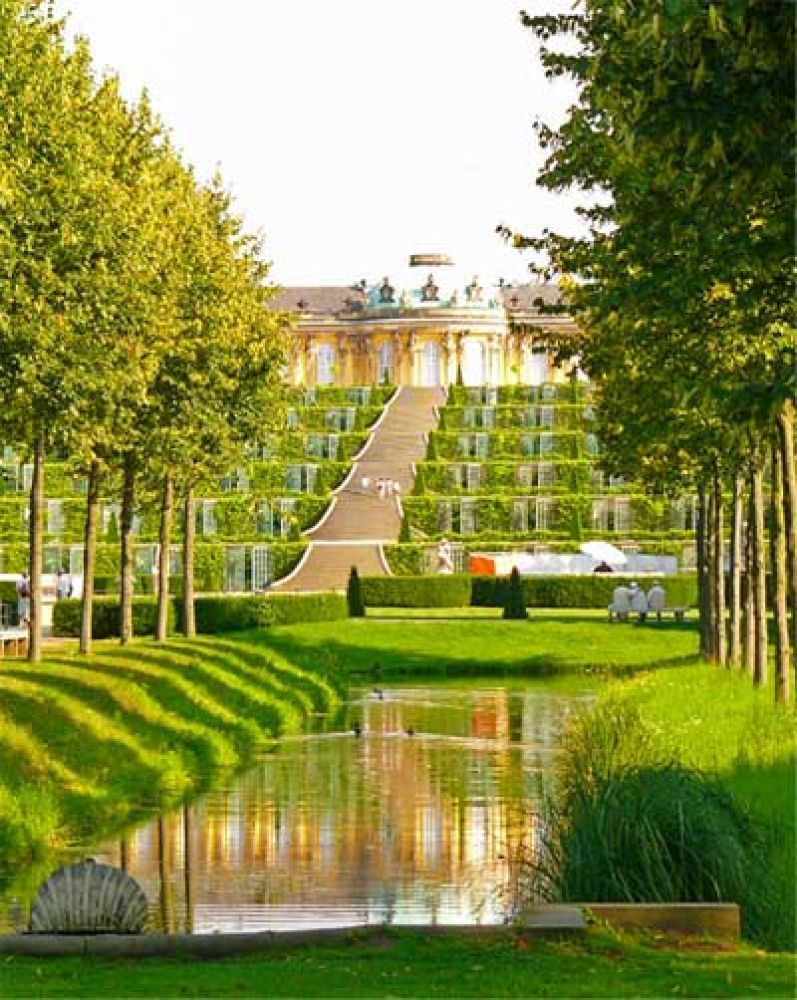

Famed as a masterpiece of Prussian Rococo architecture, Sanssouci Palace and Park are among the key cultural landmarks in the historic city of Potsdam. Erected by the esteemed architect Georg Wenzeslaus von Knobelsdorff under the commission of Frederick the Great, King of Prussia, Sanssouci Palace served as the summer residence for the king.
The name "Sanssouci," which translates to "without worries," mirrors the intention behind the construction of the palace, which was completed in 1747. It was meant to be a haven for the king, free from the rigors of court life in Berlin. The palace, snug within its expansive and meticulously designed park, quickly became a symbol of Frederician Rococo.
After the death of Frederick the Great in 1786, Sanssouci became a site of historical importance and nostalgia. Throughout the 19th and early 20th centuries, Sanssouci and its park attracted visitors interested in Prussian history and the life of the famous monarch. Even as the area faced challenges during the World Wars, the enchantment of Sanssouci persisted.
Post-World War II, Potsdam fell under the jurisdiction of East Germany. Despite ideological shifts, Sanssouci Palace continued to be recognized as a cultural treasure, with its restoration and maintenance a priority. Following German reunification in 1990, significant efforts were expended to reclaim and revitalize its splendor, leading to an upsurge in tourism.
A pivotal moment in the history of tourism for Sanssouci came in 1990 when the palace and its park were inscribed on the UNESCO World Heritage List. This acknowledgment enhanced its global standing as a site of significant cultural heritage and led to increased international interest and visitor numbers.
In recent years, there has been a noticeable shift towards experiential and educational tourism. Visitors are not only interested in viewing the magnificent architecture and gardens but also in understanding the historical context and significance of Sanssouci through guided tours, interactive exhibits, and cultural events.
Sustainable tourism practices have also been gaining prominence, with a growing emphasis on preserving the natural beauty of the park and its historical structures. There have been initiatives to reduce the environmental impact of tourist activities and to promote local cultural events that respect the palace's heritage and legacy.
Today, locals and tourists from around the world flock to Sanssouci Palace and Park to bask in its beauty and historical ambiance. With annual events like the "Potsdam Palace Night," which features concerts, theater performances, and a night-time illumination of the palace, Sanssouci continues to offer captivating experiences that blend history with modernity. The visitor infrastructure is well-developed, ensuring that despite its historical significance, Sanssouci remains accessible and enjoyable for all ages and interests.
Whether you're captivated by the story of a king who desired respite from power or you're drawn to the romance of Rococo architecture, Sanssouci Palace and Park await to offer a timeless journey into the past, with all the conveniences of the present.